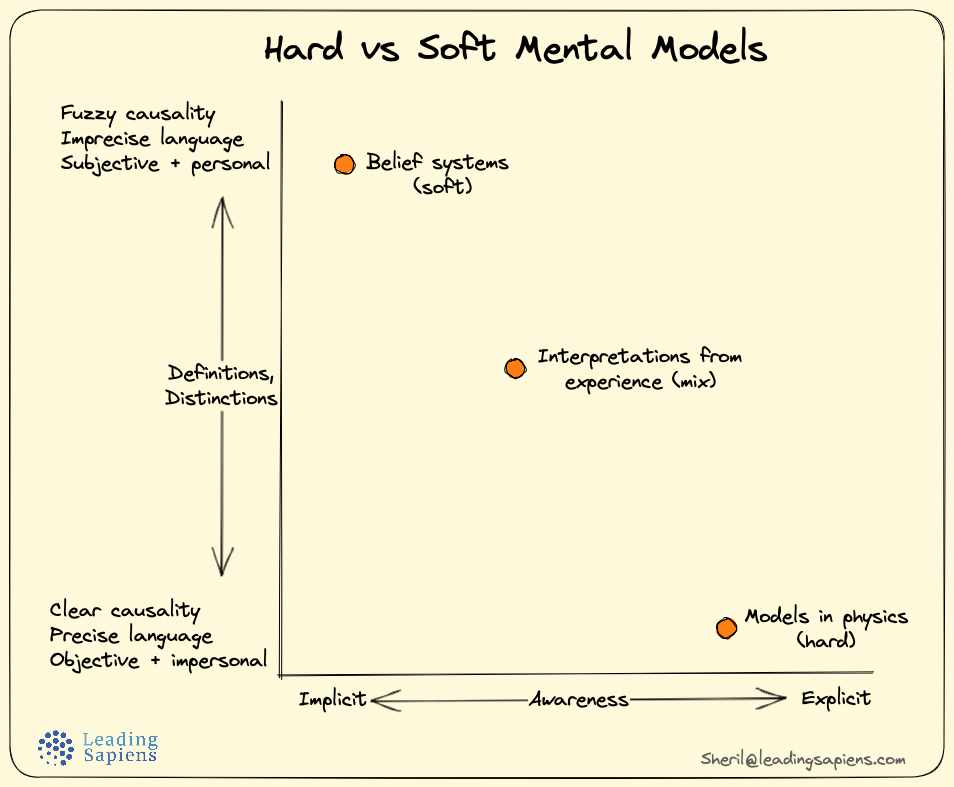Most common discourse on mental models takes an additive approach. But this tends to be half-baked, often useless in practice. There is equal value, even more so, in a subtractive approach to mental models. The key is in understanding the difference between hard and soft mental models.
How is the subtractive approach different and why is it more effective?
The additive vs subtractive approach to mental models
We seem to be drowning in mental models. Almost every other article or tweet thread has some mention of them. These range from the everyday to the esoteric. Some are useful, most are not — they just make you feel smarter.
Promoters push a range of supposedly useful mental models from a range of disciplines. But they are more similar than different in one critical aspect — they are all additive by trying to teach a “new mental model”. We get the dopamine hit of having “learned” something new but never actually getting any better.
A majority of them have their origins in Charlie Munger’s idea of a "latticework of mental models". That model itself is an additive one— you collect and tack on new models over time to build up your latticework. The more nodes and connections you have, the stronger your model and thus your abilities.
What has NOT gotten as much attention is that a majority of our mental models are tacit and below our level of awareness. There is often more value in identifying and jettisoning these existing but hidden mental models, rather than trying to learn new ones.
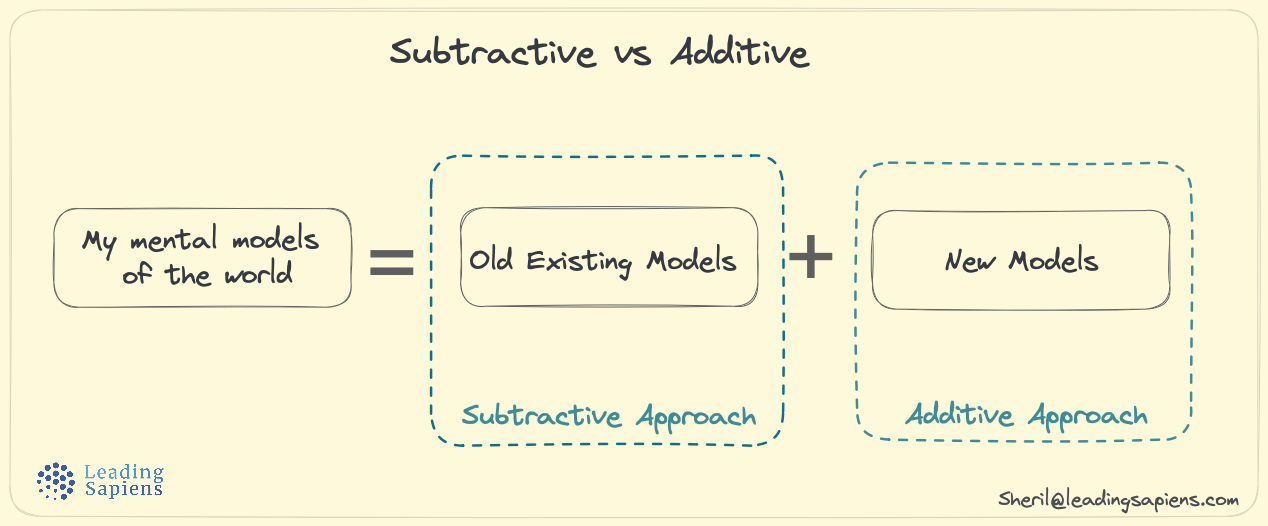
There is a fundamental reason why almost all popular treatment of mental models focuses on adding new models rather than discarding existing ones – they are targeting two very different kinds of models. One is easy to identify and "sell" but not as useful, while the other is harder to identify and package, but can be more transformative.
Two kinds of mental models
One of the first known definitions of mental models dates back to 1943:
If the organism carries a “small-scale model” of external reality and of its own possible actions within its head, it is able to try out various alternatives, conclude which is the best of them, react to future situations before they arise, utilize the knowledge of past events in dealing with the present and the future, and in every way to react in a much fuller, safer, and more competent manner to the emergencies which face it.
— Kenneth Craik, The nature of explanation
Different kinds of mental models can be found in a range of disciplines including cybernetics, architecture, cognitive psychology, systems dynamics and neuroscience amongst others. To keep our discussion simple, consider two generic types of mental models — hard and soft.
- Hard mental models are the ones common in popular discourse. These are models identified from various disciplines, packaged as a "rule" and put into language that we then learn and try to use in practice. By definition, they tend to be explicit and thus visible.
- In contrast, soft mental models are ones we're already using but unaware of. These are often not "languaged", personal to us and because of their proximity and common use, transparent to us. Nevertheless we use them and are influenced by them.
You can visualize the two types on a continuum:
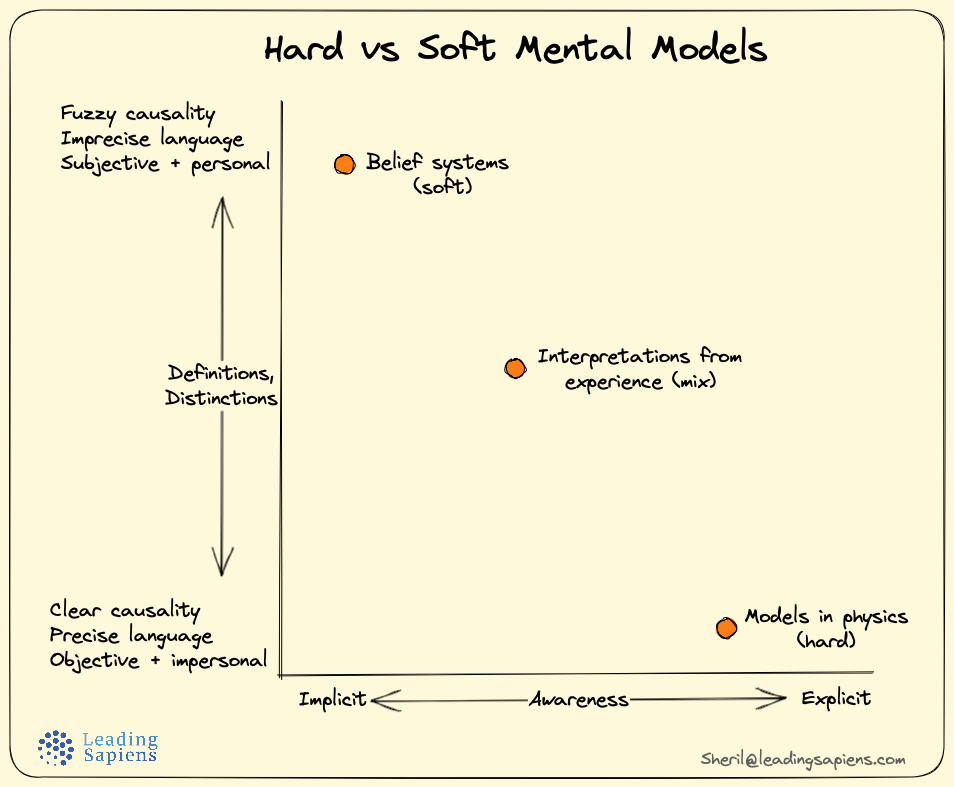
Your notions and beliefs about your abilities are an example of soft mental models, whereas models derived from physics are hard.
📚 HBR 100 Best Reads: You also get a curated spreadsheet of the best articles Harvard Business Review has ever published. Spans 70 years, comes complete with categories and short summaries.
Consider the following as a definition of soft mental models:
...the images, assumptions and stories which we carry in our minds of ourselves, other people, institutions and every aspect of the world. Like a pane of glass framing and subtly distorting our vision, mental models determine what we see. Human beings cannot navigate through the complex environments of our world without these ‘mental maps’; and all of these mental maps, by definition, are flawed in some way.
— Peter Senge in The Fifth Discipline
Why are these soft mental models invisible? It’s because they are what can be called “givens”— things we assume to be true, thus not treated as assumptions and go unexamined.
...We call them “big assumptions” because they are not currently viewed as “assumptions” at all. Rather, they are uncritically taken as true. They may be true, and they may not be, but as long as we simply assume they are true, we are blind even to the question itself.
— Robert Kegan in Immunity to Change
Soft mental models — an example
A simple but powerful example of soft, hidden mental models is the Kanizsa triangle:
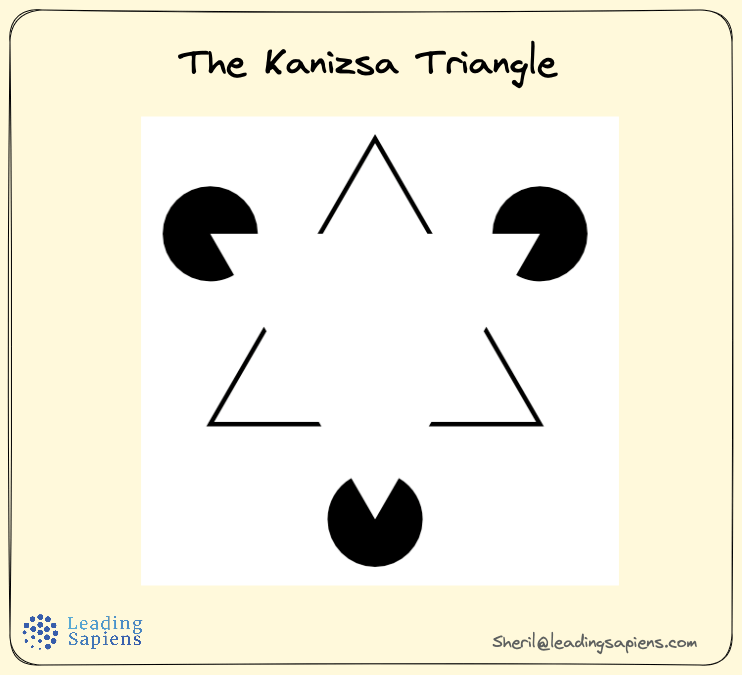
John Sterman of MIT puts it this way:
Most of us do not appreciate the ubiquity and invisibility of mental models, instead believing naively that our senses reveal the world as it is. On the contrary, our world is actively constructed (modeled) by our senses and brain.
Figure shows an image developed by psychologist Gaetano Kanizsa. The vast majority of people see a bright white triangle resting on top of three circles and a second triangle with black edges. The illusion is extremely powerful (try to look at the figure and “not see” the two triangles!).
Research shows that the neural structures responsible for the ability to see illusory contours such as the white triangle exist between the optic nerve and the areas of the brain responsible for processing visual information. Active modeling occurs well before sensory information reaches the areas of the brain responsible for conscious thought.
Powerful evolutionary pressures are responsible: Our survival depends so completely on the ability to rapidly interpret our environment that we (and other species) long ago evolved structures to build these models automatically. Usually we are completely unaware these mental models even exist. It is only when a construction such as the Kanizsa triangle reveals the illusion that we become aware of our mental models.
The Kanizsa triangle illustrates the necessity of active and unconscious mental modeling or construction of “reality” at the level of visual perception.
Modeling of higher-level knowledge is likewise unavoidable and often equally unconscious.
— John Sterman in Business Dynamics
Sterman makes a subtle but important distinction that's worth repeating — "our world is actively constructed (modeled) by our senses and brain". It's the difference between perception, interpretation and generation — we are generating reality as much as we are interpreting it.
Perception, interpretation, and generation
We don’t always see outside reality and then interpret it based on our models. This is what the additive approach is based on, and is only partially true. Rather we are creating reality itself using these models — which makes it even more critical to understand the ones we're already using, but not aware of.
Rather than a mirror or a camera that captures reality, we are more like a projector creating its own reality based on models running in our head. And most of these remain invisible and unexamined.
Our minds are not necessarily mirrors of reality, rather our reality is a mirror of our minds.
What you see is not really there; it is what your brain believes is there...Seeing is an active construction process. Your brain makes the best interpretation it can according to its previous experience and the limited and ambiguous information provided by your eye.
— Francis Crick in The Astonishing Hypothesis
In the metaphorical no less than in the literal use of “seeing”, interpretation begins where perception ends. The two processes are not the same, and what perception leaves for interpretation to complete depends drastically on the nature and amount of prior experience and training.
— Thomas Kuhn in The Structure of Scientific Revolutions
But as we saw in the Kanizsa triangle, it goes one step beyond interpretation as well. We are actively generating reality as well, just like we generated the triangle that's non-existent. We cannot "unsee" the triangle, even when we are actively aware of its non-existence.
In the additive approach, the idea is that the new mental models will help us interpret better and thus respond better. But what gets left out is that mental models also "generate" or rather create my world. This is where the implicit, soft models play a large role and why leaving them out is a missed opportunity.
Examples of soft mental models
As a human being, mental models are a part and parcel of how we operate. The fact that we use them and even that many of them are wrong is not the problem. The real challenge is that we are primarily unaware of their influence, especially unhelpful ones that impede growth and development. Some examples of hidden mental models would include:
- "Leadership requires being an extrovert."
- "Meetings are a waste of time."
- "All leaders are power hungry."
- "You cannot learn anything past a certain age."
- "People don't change."
Each of these models informs and influences my actions and how I go about it. Robert Hargrove calls them "unhelpful frames of reference":
• Role frames: “I am the boss, I have more experience, and therefore I am right.”
• Thought frames or pet theories: Seeing this situation as the one you were previously in and thereby thinking or doing the same thing.
• Industry frames: Old orthodoxies that inhibit inventive and effective thinking.
• Personal mental models: Rigid patterns of thinking or thinking based on unexamined assumptions or assumptions that may no longer be accurate.
• Gaps in reasoning: Conclusions ungrounded in data or jumping to conclusions.
• Crooked attitudes: Ways of looking at what happened based on blame, shame, or guilt, which get in the way of making accurate interpretations of reality.
• Emotional or defensive reactions: Reacting to what happened based on past hurts in a way that is intended to defend and protect yourself; may cloud your ability to see clearly.
– Robert Hargrove in Masterful Coaching
A useful tool for uncovering hidden mental models is the systems thinking iceberg. It highlights how we focus on the events level (top of the iceberg) but don't pay enough attention what actually causes it (deeper levels).
Why is the additive approach more popular
Our efforts for improvement default towards additive rather than subtractive approaches. We want to go learn additional new ones without trying to figure out what’s actually restricting us already. Why so?
The additive approach feels easy
- Learning about new models feels and sounds easy. Identifying, updating or removing existing models on the other hand is much harder and takes time, effort, and attention. The additive model is seductive but equally ineffective for the most part, especially how we usually go about it — reading about them and thinking we "got it".
- The subtractive model looks “soft” whereas the additive models looks analytical and “science backed". It's easier to package and sell the additive model.
The subtractive approach takes work
- We've spent entire lifetimes relying on these hidden models, so of course we can't get rid of them overnight.
- We see through them — their invisibility makes them harder to identify and tackle.
- We have defensive routines that actively work to prevent us from seeing the gaps and flaws in our reasoning.
- Perhaps what makes unlearning mental models so difficult is that it requires temporarily suspending judgement and preconceived notions. This makes causes discomfort and requires us to embrace what Keats called negative capability.
Mental models play a key role in performance. We can either pretend to be getting better by reading about new ones, or do the hard work of identifying, examining and refining existing unhelpful ones.
📚 You also get a curated spreadsheet of 100 best articles Harvard Business Review has ever published. Spans 70 years, comes complete with categories and short summaries.
Related reading
- One example of a common unexamined mental model in careers is implicit leadership theory. Our implicit notions about leadership and that of our organizations can have a lasting impact on our success or failure.
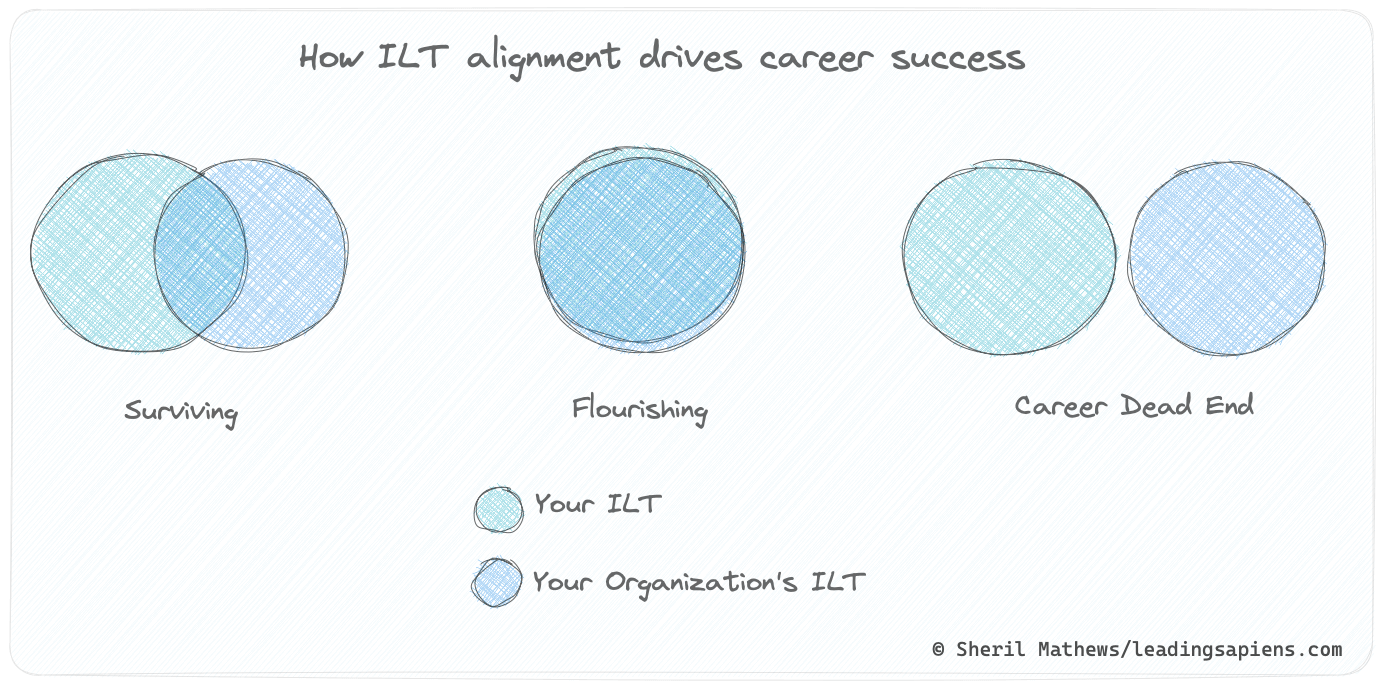
- An excellent tool to examine and uncover hidden mental models is the ladder of inference. It shows how we jump to conclusions and by slowing down the process highlight hidden assumptions.
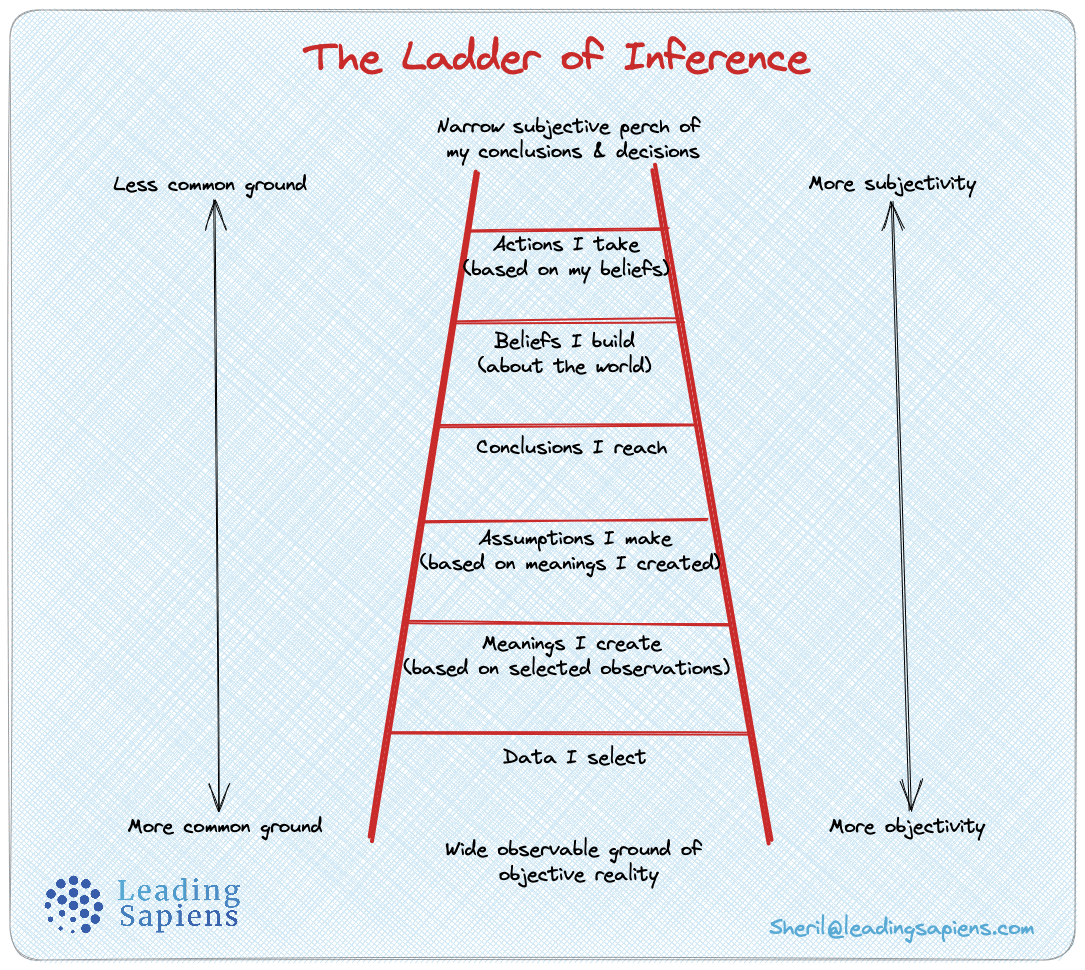
- Skilled reflection is a key part of removing, replacing, or upgrading existing mental models. Reflection is essentially a technology that most of us hardly use and especially leaders.
- An effective tool that can help with reducing our hidden mental-models is the Johari Window:
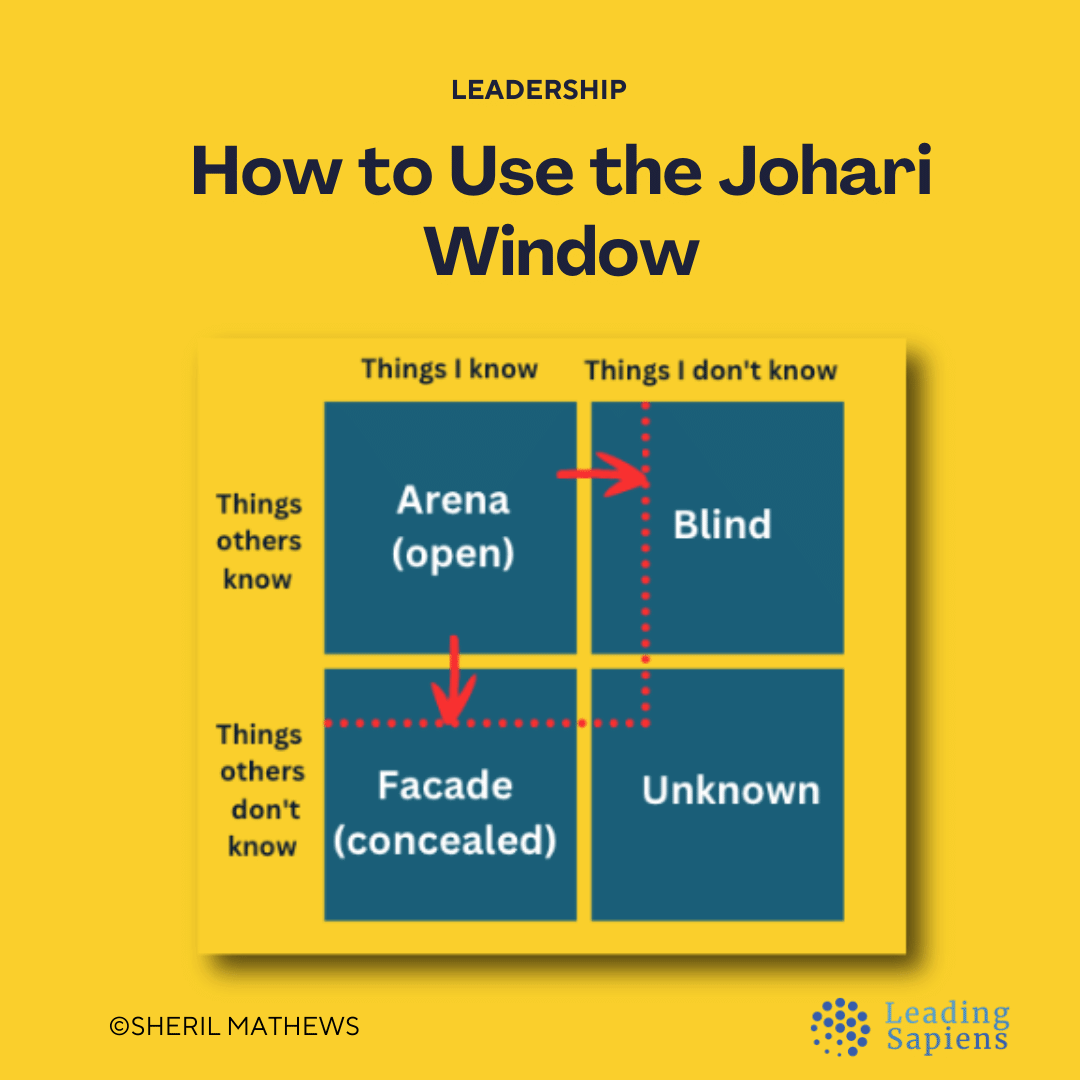
Sources and references
- The Fifth Discipline by Peter Senge.
- The Nature of Explanation by Kenneth Craik.
- Business Dynamics by John Sterman.
- Masterful Coaching by Robert Hargrove.
- Rouse, W. B., & Morris, N. M. (1986). On looking into the black box: Prospects and limits in the search for mental models. Psychological Bulletin.
- The history of mental models by P. N. Johnson-Laird in Psychology of Reasoning.
- An overview on transformative learning by Jack Mezirow in Lifelong Learning.
- Social constructivism, mental models, and the problems of obedience by Patricia H. Werhane, Laura P. Hartman, Dennis Moberg, Elaine Englehardt, Michael Pritchard, and Bidhan Parmar.
- The Astonishing Hypothesis: The Scientific Search for the Soul by Francis Crick.
- The Structure of Scientific Revolutions by Thomas Kuhn.
- Immunity to Change by Robert Kegan and Lisa Laskow Lahey.


